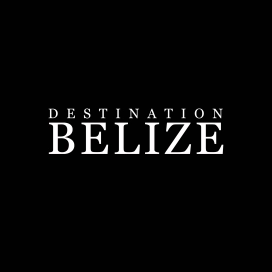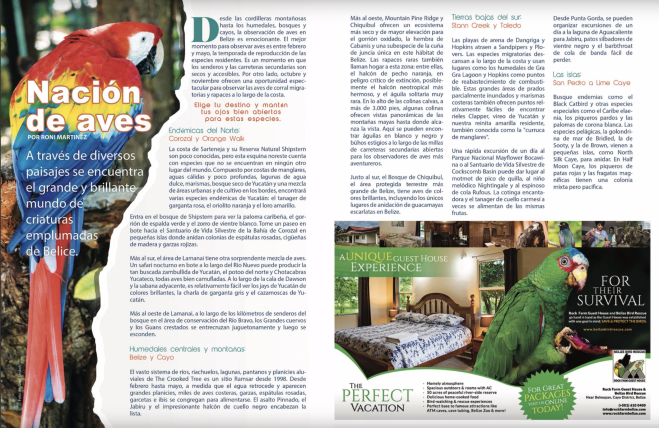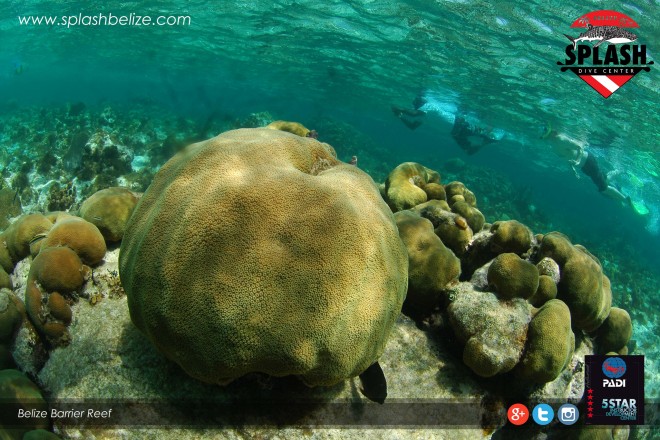A video message to U.S. citizens and Belizeans from U.S. Chargé d’Affaires, a.i. Keith Gilges.
Big Cats List Of Belize – Five Beautiful Species
Here Is A Big Cats List Of The Popular Big Cats Species In Belize
A little while back we did a piece on the international efforts to establish and maintain a green corridor running from Mexico down to Argentina to protect the region’s jaguar population, and some people registered surprise that Belize actually has a jaguar population. That population not only exists, but is hopefully growing today thanks to efforts from conservation groups such as Panthera and the Cockscomb Basin Wildlife Sanctuary.
Well, we thought that if people were surprised that Belize had jaguars, they’d be even more intrigued to hear that there are actually five major big cats species running around Belize. So here’s an introduction to Belize’s big cats.
Belize Big Cat Jaguar

First and foremost would be the jaguar, perhaps the most well known of Belize’s big cats, (besides being the name of the national football team). Known to scientific types as Panthera onca, it’s amazing that they have survived at all, given the high value placed on their stunning pelts, from the days of the ancient Maya up to modern times.
In fact, the jaguar was respected by the Maya, who called it baalam, or simply, the King. Jaguars appear in many ancient carvings and statues, and were a chief adornment of Maya royalty.
You rarely see these guys in the daytime, as they like to hunt at night, are shy and have magnificent camouflage, but now and then they can be seen sunning themselves, and occasionally their roars will liven up the Belizean night.
They hunt peccaries monkeys, agoutis, deer, birds, fish, lizard, turtles, and other animals, and aren’t adverse to the odd bit of carrion when they come across it. Despite their fierce reputation, attacks on humans have always been rare.
Belize’s Cockscomb Basin Wildlife Sanctuary is the world’s only designated jaguar preserve and is doing great work in helping to maintain the numbers and health of this beautiful, iconic animal.
Belize Big Cat Mountain Lion
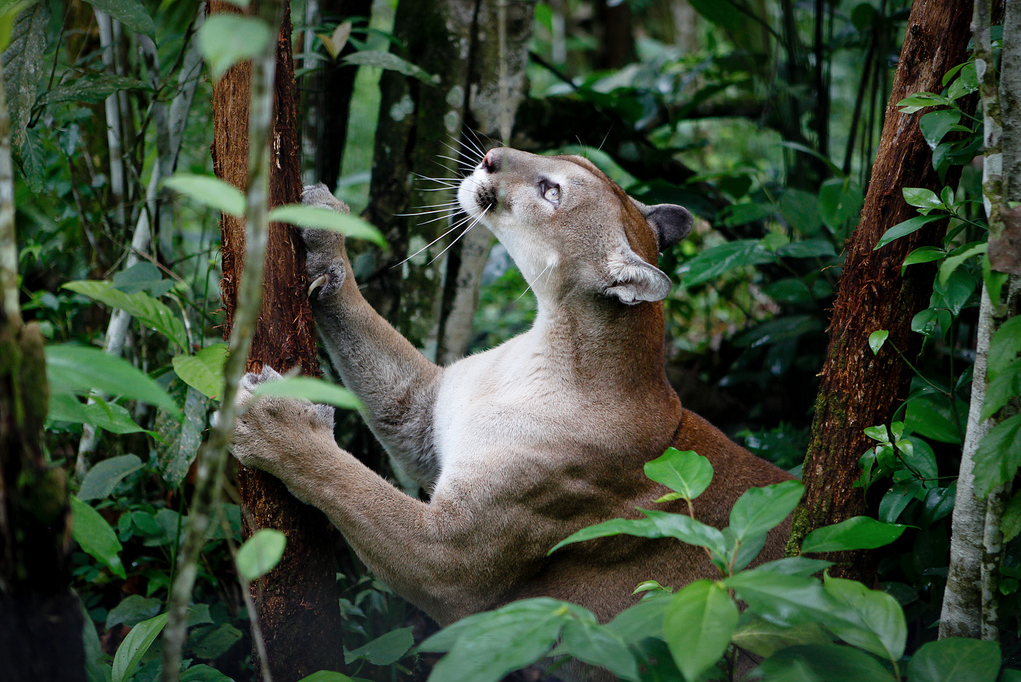
Another big feline is the Mountain Lion, or Puma concolor. The layman also knows them as pumas, cougars, catamounts and panthers, all of which are probably more accurate, as this cat is neither restricted to mountains, nor does it roar like lions do.
As the largest cats in Central America, weighing up to 200 pounds, they like their space, with a single male lion claiming over 100 square miles, sometimes closer to 200 square miles, as its home turf. They also have the largest range of any mammal in the western hemisphere, running from the Canada’s Yukon all the way down to the Andes in South America.
The mountain lion is also more closely related to the common house cat than any other lion species.
In Belize wherever you find deer you’ll sometimes find mountain lions, as it’s their favourite food, each lion eating about one deer a week and covering up what it doesn’t eat now to return until it’s finished.
However, sightings are rare as this is another solitary, elusive animal
Belize Big Cat Ocelot

You have a much better chance of seeing an ocelot, or Leopardus pardalis, in Belize. These smaller but no less beautiful cats hunt both day and night, looking for smaller mammals, reptiles and birds.
They have also been around for a long time, being well known to the ancient Maya and Mexican Aztec, who called them ōcēlōtl, or field tiger, from which the name ocelot derives.
While its range isn’t as extensive as the mountain lion, it has been sighted in Texas and Arizona in the US, down throughout South America, and even on the islands of Trinidad and Margarita.
Nearly hunted to extinction because of its beautiful pelt, the ocelot, also known as tiger cat in Belize, and dwarf leopard in other places, is now registered on the IUCN Red List of Threatened Species as “least concern”.
Thankfully, ocelots are no longer hunted in Belize, and there seem to be more sightings of this gorgeous cat each year, so keep a good look out.
Belize Big Cat Margay

The Margay, scientific name Leopardus wiedii, after German naturalist and explorer Prince Alexander Philipp Maximilian zu Wied-Neuwied, but is thankfully more commonly known as the Long Tailed Spotted Cat or Tree Ocelot, as it resembles an ocelot, but smaller and with longer legs and tail.
Almost hunted to extinction for its lovely coat, this cat is now listed by the IUCN as “Near Threatened”, which is somewhat good news for another of Belize’s beautiful cats
Ranging from Mexico down to Argentina, the Margay lives in the forest and is an accomplished climber with special claws and ankle joints that allow it to turn 180 degrees and climb underneath branches and leaping through trees like a monkey, which it hunts. It is one of only two cat species (the other being the clouded leopard) thought to be able to climb down headfirst.
This is another shy cat that hunts at night for birds, monkeys, tree frogs and insects and other small game. It is interesting to scientists studying animal auditory mimicry, as it has been observed imitating the call of an infant pied tamarin (a sort of small monkey), which caused the adults to come closer to investigate.
If this is true, it makes the margay one of the smartest, as well as most flexible cats in the kingdom.
Belize Big Cat Jaguarundi

Jaguarundi, (Puma yagouaroundi) are a truly local cat, ranging from Central America down to Argentina, where they live in dense forests and thickets that protect them their only real predators – humans and dogs.
Jaguarundis are small cats, with stumpy legs and an elongated body without markings, looking more like a house cat than their bigger cousins. In fact, it is rumoured in Belize that they mate with housecats, which would account for some of the big kitties we see here.
Interestingly, there is said to be a population in Florida that is spreading northward, with sightings in Alabama, due to, supposedly, Jaguarundis having been introduced by a writer who brought the animals in and released them in his hometown of Cheifland and other parts of the state.
Mostly active at night, hunting for rats, birds, mice, rabbits and other small game, they can also been seen during the day, especially around their favourite watering places.
So the next time you see a big brawny house-cat in Belize, you’ll have to ask yourself…
So yes, Belize does have a relatively healthy big cat population, and thanks to the rise of eco-tourism and public awareness projects, some of these beautiful animals are on the rebound and enjoying the vast tracks of pristine land set aside as protected areas in Belize.
Here at Chaa Creek, and at our Belize Natural History Centre, we love to see examples where responsible travel and ecotourism are actually contributing to the environmental and social wellbeing of the land, and we’ll keep bringing you more highlights showing how this is working.
http://www.destinationbelize.com
Nación de aves
Por Roni Martinez

A través de diversos paisajes se encuentra el grande y brillante mundo de criaturas emplumadas de Belice.
Desde las cordilleras montañosas hasta los humedales, bosques y cayos, la observación de aves en Belice es emocionante. El mejor momento para observar aves es entre febrero y mayo, la temporada de reproducción de las especies residentes. Es un momento en que los senderos y las carreteras secundarias son secos y accesibles. Octubre y noviembre ofrecen una oportunidad espectacular para observar las aves de corral migratorias y las rapaces a lo largo de la costa.
Elige tu destino y mantén tus ojos bien abiertos para estas especies.
Endémicas del Norte: Corozal y Orange Walk.
La costa de Sarteneja y su Reserva Natural Shipstern son poco conocidas, pero esta esquina noreste cuenta con especies que no se encuentran en ningún otro lugar del mundo. Compuesto por costas de manglares, aguas cálidas y poco profundas, lagunas de agua dulce, marismas, bosque seco de Yucatán y una mezcla de áreas urbanas y de cultivo en los bordes, encontrará varias endemias de Yucatán: el tanager de garganta rosa, el oriolito naranja y el loro amarillo.
Entra en el bosque de Shipstern para ver la paloma caribeña, el gorrión de espalda verde y el zorro de vientre blanco. Tome un paseo en bote hacia el Santuario de Vida Silvestre de la Bahía de Corozal en pequeñas islas donde anidan colonias de espátulas rosadas, cigüeñas de madera y garzas rojizas.
Más al sur, el área de Lamanai tiene otra sorprendente mezcla de aves. Un safari nocturno en bote a lo largo del Río Nuevo puede producir la tan buscada zambullida de Yucatán, el potoo del norte y la mala voluntad de Yucatán, todas aves bien camufladas. A lo largo de la cala de Dawson y la sabana adyacente, es relativamente fácil ver los jays de Yucatán de colores brillantes, la charla de garganta gris y el cazamoscas de Yucatán.
Más al oeste de Lamanai, a lo largo de los kilómetros de senderos del bosque en el área de conservación de Río Bravo, los Grandes cuervos y los Guans crestados se entrecruzan juguetonamente y luego se esconden.
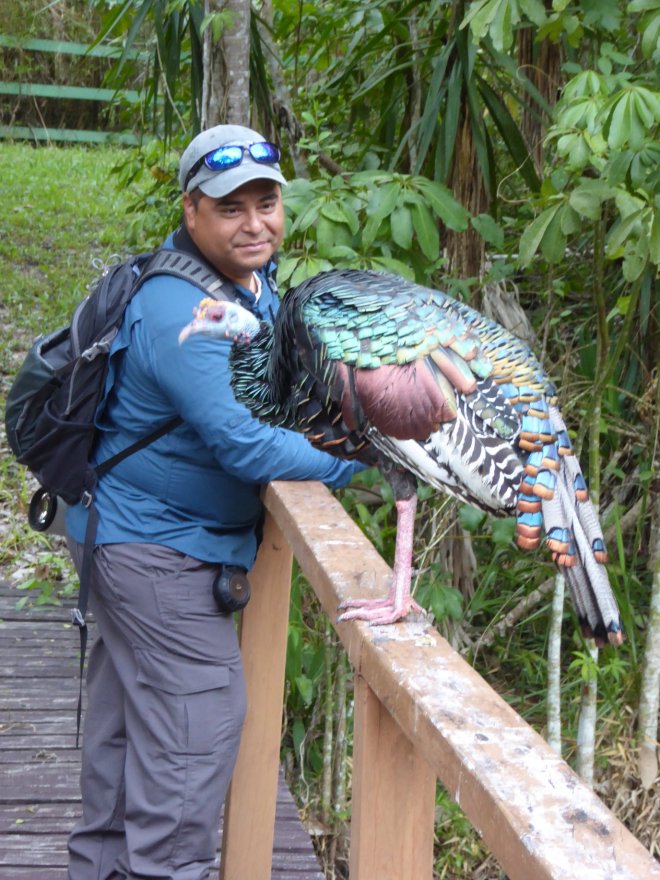
Humedales centrales y montañas: Belice y Cayo.
El vasto sistema de ríos, riachuelos, lagunas, pantanos y planicies aluviales de The Crooked Tree es un sitio Ramsar desde 1998. Desde febrero hasta mayo, a medida que el agua retrocede y aparecen grandes planicies, miles de aves costeras, garzas, espátulas rosadas, garcetas e ibis se congregan para alimentarse. El asalto Pinnado, el Jabiru y el impresionante halcón de cuello negro encabezan la lista.
Más al oeste, Mountain Pine Ridge y Chiquibul ofrecen un ecosistema más seco y de mayor elevación para el gorrión oxidado, la hembra de Cabanis y una subespecie de la cuña de juncia única en este hábitat de Belice. Las rapaces raras también llaman hogar a esta zona: entre ellas, el halcón de pecho naranja, en peligro crítico de extinción, posiblemente el halcón neotropical más hermoso, y el águila solitaria muy rara. En lo alto de las colinas calvas, a más de 3.000 pies, algunas colinas ofrecen vistas panorámicas de las montañas mayas hasta donde alcanza la vista. Aquí se pueden encontrar águilas en blanco y negro y búhos estigios a lo largo de las millas de carreteras secundarias abiertas para los observadores de aves más aventureros.
Justo al sur, el Bosque de Chiquibul, el área protegida terrestre más grande de Belice, tiene aves de colores brillantes, incluyendo los únicos lugares de anidación de guacamayas escarlatas en Belice.
Tierras bajas del sur: Stann Creek y Toledo
Las playas de arena de Dangriga y Hopkins atraen a Sandpipers y Plovers. Las especies migratorias descansan a lo largo de la costa y usan lugares como los humedales de Gra Gra Lagoon y Hopkins como puntos de reabastecimiento de combustible. Estas grandes áreas de prados parcialmente inundados y marismas costeras también ofrecen puntos relativamente fáciles de encontrar rieles Clapper, vireo de Yucatán y nuestra reinita amarilla residente, también conocida como la “curruca de manglares”.
Una rápida excursión de un día al Parque Nacional Mayflower Bocawina o al Santuario de Vida Silvestre de Cockscomb Basin puede dar lugar al motmot de pico de quilla, al niño melódico Nightingale y al espinoso de cola Rufous. La cotinga encantadora y el tanager de cuello carmesí a veces se alimentan de las mismas frutas.
Desde Punta Gorda, se pueden organizar excursiones de un día a la laguna de Aguacaliente para Jabiru, patos silbadores de vientre negro y el barbthroat de cola de banda fácil de perder.
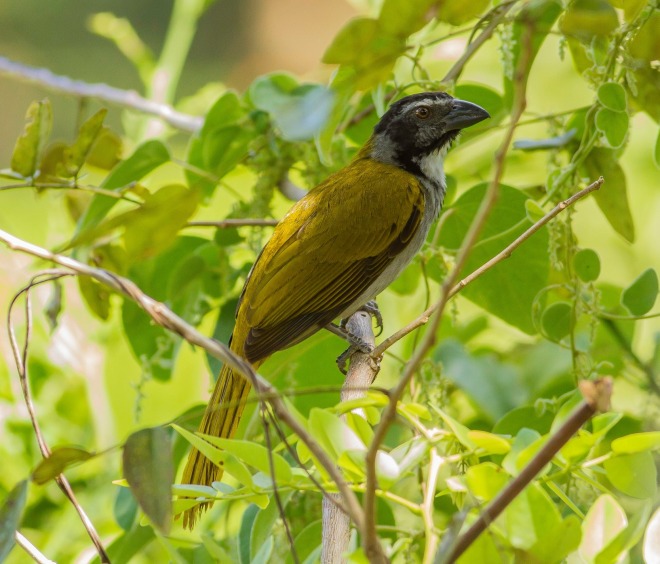
Las islas: San Pedro a Lime Caye.
Busque endemias como el Black Catbird y otras especies especiales como el Caribe elaenia, los piqueros pardos y las palomas de corona blanca. Las especies pelágicas, la golondrina de mar de Bridled, la de Sooty, y la de Brown, vienen a pequeñas islas, como North Silk Caye, para anidar. En Half Moon Caye, los piqueros de patas rojas y las fragatas magníficas tienen una colonia mixta pero pacífica.
http://www.destinationbelize.com
BELIZE CONSERVATION INVESTMENT
Modernizing and innovating investment strategy in order to maximize conservation value.
The Trust was established in 1996 for the sole purpose of financing conservation efforts in Belize’s protected areas. PACT, with the passing of the 2015 amendment act is now responsible for the financing and management of the entire National Protected Areas System (NPAS) . The NPAS is comprised of 103 individual sites and is one of the most diverse throughout the region and includes nature reserves, wildlife sanctuaries, natural monuments, and national parks.
In order to ensure that it is getting maximum conservation value for its investments, the Protected Areas Conservation Trust (PACT) is modernizing and bringing greater innovation into its investment strategy, i.e. other than investments via competitive grant making. Furthermore, among the revised functions outlined in the PACT Act 2015 is the legal mandate of “setting strategic priorities for the development, mobilization and allocation of financial resources for the NPAS.” In response, PACT has developed and is implementing a Conservation Investment Strategy.
Whereas the long-term approach will be to respond to the needs of the National Protected Areas System, as opposed to individual sites, the desire is for investments to respond to the current critical needs of the NPAS. As determined through a consultative process, these initial critical needs include:
- Investments towards Biodiversity and Ecosystem Protection enabling improved Ecosystem Health
- Financial Sustainability/ Revenue Generation for the NPAS guiding the improved financial sustainability of the system
- Development and/or expansion of socio-economic benefits from the NPAS to support community development and local economy
To this end, while every effort will be made for PACT to move towards mobilizing resources to meet the global financial shortfall for the system, this initial plan will make specific investments towards these priorities. Allocations will be made in a manner that is transparent, equitable and can provide for optimum conservation return on investments (CROI). That meet the critical needs identified above.
Read more about available Categories of Investments.
http://www.destinationbelize.com
Coronavirus disease (COVID-19) Pandemic
Live from WHO Headquarters – COVID-19 daily press briefing 20 March 2020
Originally broadcast live on 20 March 2020, the daily press briefing on coronavirus COVID-19, direct from WHO Headquarters, Geneva Switzerland.
https://www.who.int/emergencies/diseases/novel-coronavirus-2019
http://www.destinationbelize.com
NOTICE TO BELIZE TOURISM STAKEHOLDERS

WELCOME TO SPLASH DIVE CENTER
Belize Scuba Diving in Placencia, Paradise Both Above and Below
Arranging and planning your Belize scuba diving packages and snorkeling trips in Placencia, Southern Belize, has never been easier or more fun with Splash Dive Centre. We have designed this website to give you information on Placencia, the Belize Whale sharks and the Barrier Reef dive sites, and about us and our commitment to Placencia, Belize dive sites and the community. Splash Dive Centre can arrange snorkel trips, PADI courses, dive packages, whale shark tours and trips, inland adventure tours, accommodation and cater to single divers, families and group bookings. Please enjoy browsing through our website and for specific questions feel free to contact us.
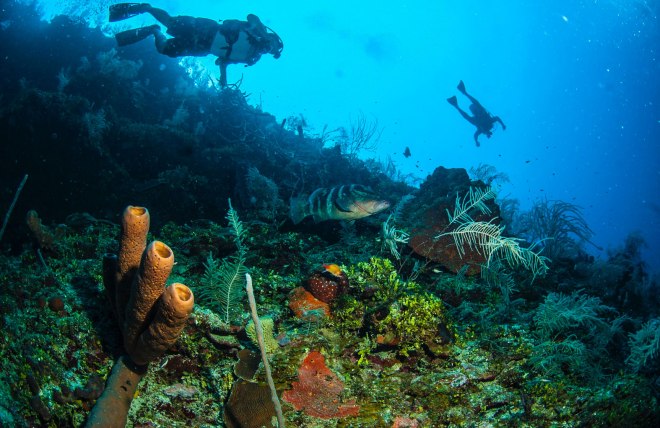
Belize Whale sharks & Scuba diving
Whale Sharks, Blue Hole, Barrier Reef, Customized Belize Scuba Diving Packages and Accommodation in Placencia.
Although Belize is one of the smallest countries in Central America, it has the second largest Barrier reef system in the world, and the largest in the Western hemisphere with wonderful snorkelling and scuba diving opportunities. There is fantastic scuba diving and snorkeling in the inner cayes, the barrier reef, the three atolls, particularly the more remote Glovers Reef Atoll, the famous blue hole and the whale sharks season at Gladden Spit.
Belize Whale Shark diving packages at Gladden Spit have long been a very popular scuba and snorkel destination.
As Belize has grown in popularity, development has occurred in the North of the country, yet Placencia still remains laid back, and with an authentic community offering the highest standards of service. When you stay in Placencia, you’ll feel a part of the community and have access to the best scuba diving packages Belize has to offer. Placencia village has retained it’s natural and authentic charm and non-divers can relax on the beautiful beaches or take one of the many inland tours that are available.
Some of the most pristine reef systems are in Southern Belize, and Gladden Spit the world famous Whale shark feeding site is just a short boat ride away, and day and overnight trip excursions to the famous Blue Hole can be run out of Placencia, so come and discover the best scuba/snorkeling, and an authentic community in Placencia with the real Belize, both below and above the water.

We have put together the ‘Big 6’ scuba diving packages, that deliver the very best of what Belize has to offer a scuba diver. Please read each package to see what is included, and there are links to the dive sites and sections of the Belize Barrier Reef you will get to scuba dive on;
- The Grand Slam
- Barrier Reef Package
- Glovers & Barrier Reef Diving Package
- Blue Hole & Barrier Reef Diving Package
- Whale Shark Scuba Diving Packages
- Blue Hole & Whale Shark Diving Packages
Whilst there may not be the opportunity for you to see every section of Belize in each scuba diving package, we can guarantee you will want to come back for more!!!!! With great visibility on the reefs all year round, due to their distance from the shoreline, the diving is a photographers delight and with so many sites to choose from you’ll feel you’ve truly escaped the crowds which in many popular resort destinations is a rare luxury.
Splash Dive Center work with several different guest houses, hotels, apartments, villas and resorts in the village of Placencia and up the peninsula for our Belize Barrier Reef dive and snorkeling tour packages. We also work with resorts on Ambergris Caye for customers who want to dive the reef and the Belize Blue Hole from San Pedro. The accommodation providers we work with range from nice clean economy rooms, to high end luxury style apartments and all inclusive beach front resorts. We can also arrange house rentals for groups.
Many of our guests enjoy staying in the small and friendly village of Placencia, and eating out ‘a-la-carte’ as opposed to being confined to an all-inclusive resort. You’re never more than a 10 minute walk from anywhere in Placencia, and there are many cafes and restaurants selling local seafood’s, and international cuisine. There are a few friendly bars where the locals and tourists hang out and enjoy sunset beers. You can find souvenirs at boutique gift shops.
For guests who prefer private beach front accommodation then the apartments and resorts of Miramar, Laru Beya and Chabil Mar Villas are a short bicycle ride, or taxi from the village of Placencia. Splash Dive Center will pick you up each day for your dive/snorkel trip or inland adventure tour..
Economy
- Sea Glass Inn In Placencia village,
- SeaSpray Hotel, Placencia village
- SpinDrift Hotel Ambergris Caye, sea view
Mid range
- Los Porticos Villas Just outside the north end of Placencia Village
- Laru Beya A few miles north of Placencia Village
- Miramar Apartments Placencia village, beach front
- Mayan Princess Ambergris Caye, sea view
High end/Luxury
- Chabil Mar Villas Outside Placencia village, beach front
- Portofino Ambergris, Sea view
So whether your looking an economy package of barrier reef scuba diving packages and snorkeling, or specifically for Belize’s Whale shark diving, please contact our staff for specific questions about your scuba dive package for customization.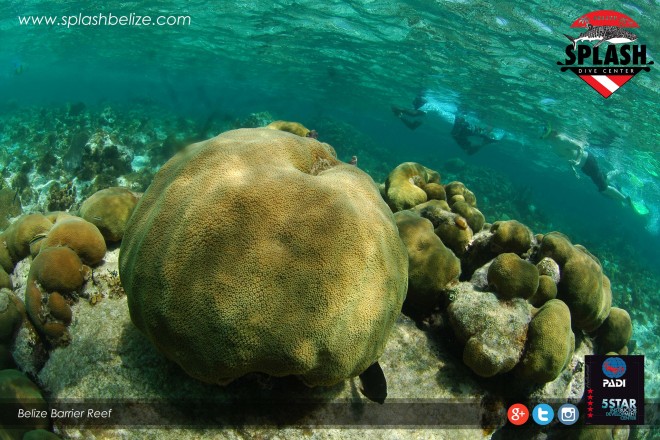
http://www.destinationbelize.com
Destination Belize 2020 Theme
Red Bank Village and the Scarlet Macaw Tour Belize

Despite their name, scarlet macaws are not entirely red (or scarlet) colored. Instead, these birds are adorned with brilliantly hued feathers of red, yellow, and blue. Related to parrots, scarlet macaws are very swift fliers and often travel in pairs or small groups.
The species of scarlet macaws found in Belize are ara macao cyanoptera and can be found across Central America as far south as Costa Rica. Every December, they leave their homes in Chiquibul National Park in search of fruits which grow in abundance in and around the village of Red Bank in southern Belize.
Red Bank Village and the Scarlet Macaw Tour
It is estimated that fewer than 250 scarlet macaws still exist in Belize, and most of these can be found in Red Bank. Despite a ban on poaching, scarlet macaws are a very slow-growing species and so seeing these magnificently plumed birds is truly a spectacular sight as they gather to feed along the river banks. Other birds that can be seen in the area include parrots, toucans, and herons, making a visit to Red Bank a mandatory stop for bird watchers.
Where in Belize Is Red Bank Located?
Red Bank is a small, predominately Maya village located in Stann Creek District just a short distance from Toledo District in southeastern Belize. Red Bank is located a few miles south of the Cockscomb Basin Wildlife Sanctuary.
The Best Time To Do This Tour
The scarlet macaws move across Belize according to seasonal requirements. Generally, scarlet macaws arrive at the lower elevations in and around Red Bank in December and stay until March before heading to the Chiquibul National Park for the breeding season. The prime viewing time to see these birds is March.
How to Get to Red Bank Village
The village of Red Bank is located in Stann Creek District just a mile from Toledo District in southeastern Belize. The village is located 39 miles southeast of Belmopan and 37 miles west of Placencia just a few miles off the Southern Highway.
The Best Way to Experience the Scarlet Macaw Tour
The density of the wilderness around the village and the relatively small number of scarlet macaws make hiring a professional guide mandatory. Be sure to bring along insect repellant, hiking boots, and a long-sleeved shirt and pants. Of course, don’t forget your binoculars and a camera! Most tours also include a homecooked meal of traditional Maya fare in the village.
Why Visit Belize in March 2020
With fantastic weather, Belize in March is at the top of tourist season, with countless opportunities to fish, dive, snorkel, sail, and explore the lush landscape of tropical rainforests, mountain peaks, and rich fertile plains. March is also when many high-energy festivals and celebrations occur throughout the country, making it the perfect time to visit the tropical paradise of Belize.
Instead of shivering through another month of winter in the United States and Canada, why not come on down to Belize and relax under the warm sunny rays of a tropical sun? Or do one of the following activities or tours:
- Visit Mayan Ruins – Once the beating heart of the ancient Mayan empire, Belize is home to dozens of amazing ruined cities, including huge stone pyramids that visitors can climb and explore.
- Cave Tubing – Tubing down a river has a special twist in Belize, where visitors can ride their inner tubes through an exciting series of spooky caves.
- Zip Line – Few experiences can compare to swinging down a zip line high above the canopy of a lush tropical rainforest.
- Swimming in the Mopan and Macal Rivers – Few activities will warm your spirit as splashing in the lovely waters of the gorgeous Mopan or Macal River.
Belize Events and Festivals in March

- La Ruta Maya Belize River Challenge – On several consecutive days, canoeists from around the country and region make their way via the Macal and Belize Rivers from the town of San Ignacio in the west of Belize to the biggest metropolis in the east, Belize City.
- Baron Bliss Day – A special holiday unique to Belize, celebrating one of the country’s national heroes. A regatta is held every year near the lighthouse outside of Belize City where Baron Henry Edward Ernest Victor Bliss is buried. Sailboat and horse races vie for kite-flying competitions in honor of Belize’s great benefactor.
Top Things to Do and See in March

- Visit the amazing ATM cave in Cayo District
- Head over the border to nearby Guatemala to explore the ruins of the legendary Mayan city of Tikal
- Work on your tan
- Go snorkeling or scuba diving with whale sharks, the gentle giants of the deep
- Explore the ruins of the lost Mayan cities of Xunantunich or Cahal Pech
- Relax on the beach and splash in the warm waters of the Caribbean Sea
What is the Weather Like in March

The weather in Belize in March is almost perfect, with long, sunny days and refreshing breezes at night. Rainfall is extremely rare, and daytime temps average around 83F (28C). Nights are pleasantly cool, with offshore breezes bringing the temperature to a comfortable average of 74F (23C). Shorts, sandals, and a T-shirt, with perhaps a light jacket at night, are all the clothing you’ll need when visiting Belize in March.
http://www.destinationbelize.com
